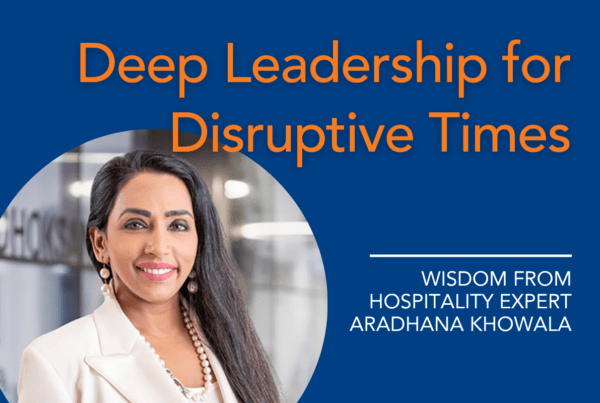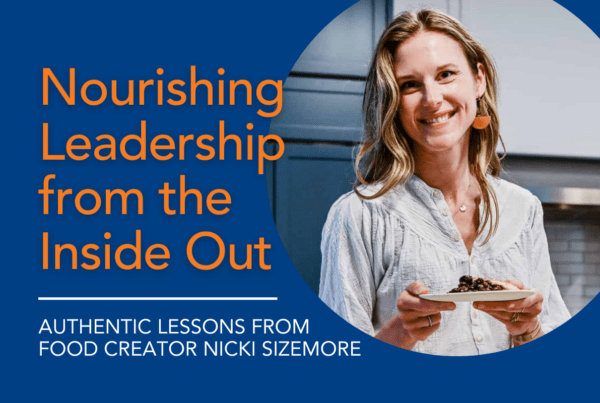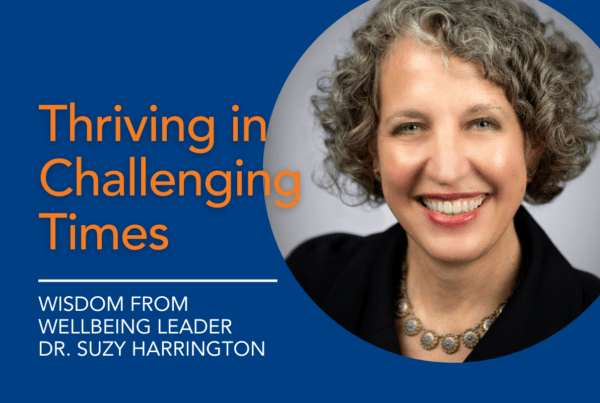→ How can we create the conditions for people to leave work more capable, energized, and well than when they came?
Subscribe
Latest Issues

Wisdom for Our Disruptive Times from Global Hospitality and Tourism Leader Aradhana Khowala I recently had one of those discussions that leaves you feeling both energized and thoughtful. You know the kind—where your soul feels nourished and your mind buzzes with possibilities. My conversation was with Aradhana Khowala, worldwide expert in the hospitality, travel, and tourism industry. I believe her insights can transform how we think about leadership. What Does It Mean to Thrive? Aradhana’s journey fascinates me—from a young girl in India with a travel addiction (her words!) to advising governments across 85 countries on tourism strategies. What strikes me most is how she carries this vast global experience with such humility. As we talked, I couldn’t help but nod in agreement when she described the current state of the world as a “perma-crisis.” Don’t we all feel it? The climate anxiety, technological disruption, deepening inequalities, and geopolitical tensions swirling around us. As Aradhana pointed out, “the old playbook does not work anymore” in this environment, yet we’re stubbornly measuring success with the same outdated metrics. I asked Aradhana what thriving means in today’s world. Her answer resonated with me: Thriving isn’t about “climbing up, but going deep.” This…

In our increasingly complex world marked by what I’ve come to call “societal inflammation,” what does it truly mean to thrive as leaders and human beings? Recently, I sat down with Nicki Sizemore, creator of Mind, Body, Spirit, FOOD, whose journey through the food industry offers profound insights for leadership in these turbulent times. The Power of Inner Connection What struck me most from our conversation was Nicki’s emphasis on leadership beginning with a deep connection to self. After experiencing burnout at the peak of her successful blogging career—when she found herself “writing for Google rather than expressing who she was”—Nicki took an unprecedented summer off to reconnect with her purpose. “Inner connection is how I find thriving,” she shared. “The beauty of that is when we’re deeply connected to ourselves, we can authentically connect not just to other people, but to the world at large.” This inner work isn’t just a nice-to-have—it’s essential for thriving, sustainable leadership. When we’re rooted in self-awareness, our ability to lead others flows naturally rather than becoming another depleting task. From Extraction to Reciprocity Perhaps the most powerful leadership paradigm Nicki described was the shift from extraction to reciprocity. In the food world, she’s…

In a recent conversation with Dr. Suzy Harrington, a pioneering health and wellbeing executive, we explored what it means to thrive as individuals and organizations during these turbulent times. As someone who has served as the first dedicated Chief Wellness Officer in higher education and developed influential frameworks for organizational wellbeing, Suzy offers valuable insights on creating environments where people can flourish despite challenges. What Does It Mean to Thrive Today? Suzy believes that at the heart of thriving in today’s world is our relationships with others. “Be kind, be compassionate, use your voice, have meaningful conversations, listen to others,” she advises. A big part of thriving, whether at work or at home, is about respecting people for who they are, even when differences arise, and developing skills to engage in constructive conflict. She also emphasizes that finding joy remains essential, even when things feel heavy. I’ve found that whether it’s through reaching out to others, spending time in nature, or honoring whatever spiritual practice works for you, maintaining a sense of joy can be an act of courage—and it is the kind of courageous role modeling our world needs. “How do you continue to have fun when everything’s so…

Stepping into the role of thriving leadership can result in dramatic shifts in how you live and lead. More often, though, it’s about a setting a clear intention and making small, positive changes that accumulate over time. The process for incorporating a new habit into your life and work isn’t magic, nor it is easy for most of us. One survey reports that, shockingly, only 9% of people stick to their New Year’s goals. Here’s something I’m working on this year: Spending less time on my computer. I know less screen time will enormously benefit my wellbeing mentally, emotionally, socially, and physically, yet I must remind myself to do it. Not only is my job often computer-heavy, using the computer only when it’s essential is a new behavior—and, like all new habits, putting it into practice requires attention and effort. Fortunately, the science behind habit formation offers valuable insights for turning that effort into greater ease. This practical guide will support you in creating and sustaining new habits that transform your vision of thriving leadership into a lasting reality. A Brief Masterclass on the Science of Habits Habits are formed by behaviors you repeatedly do, usually in a specific context. Take,…
